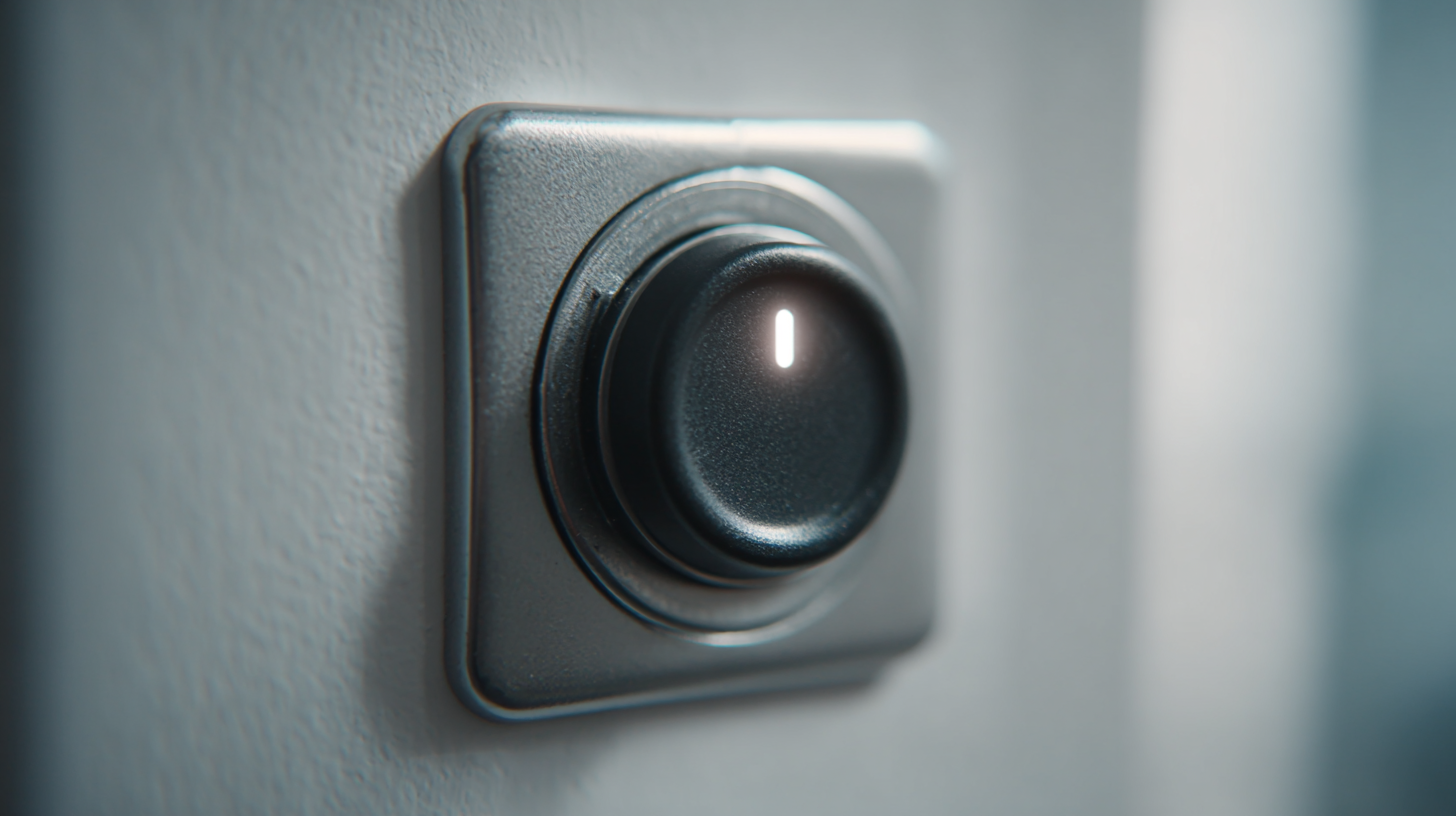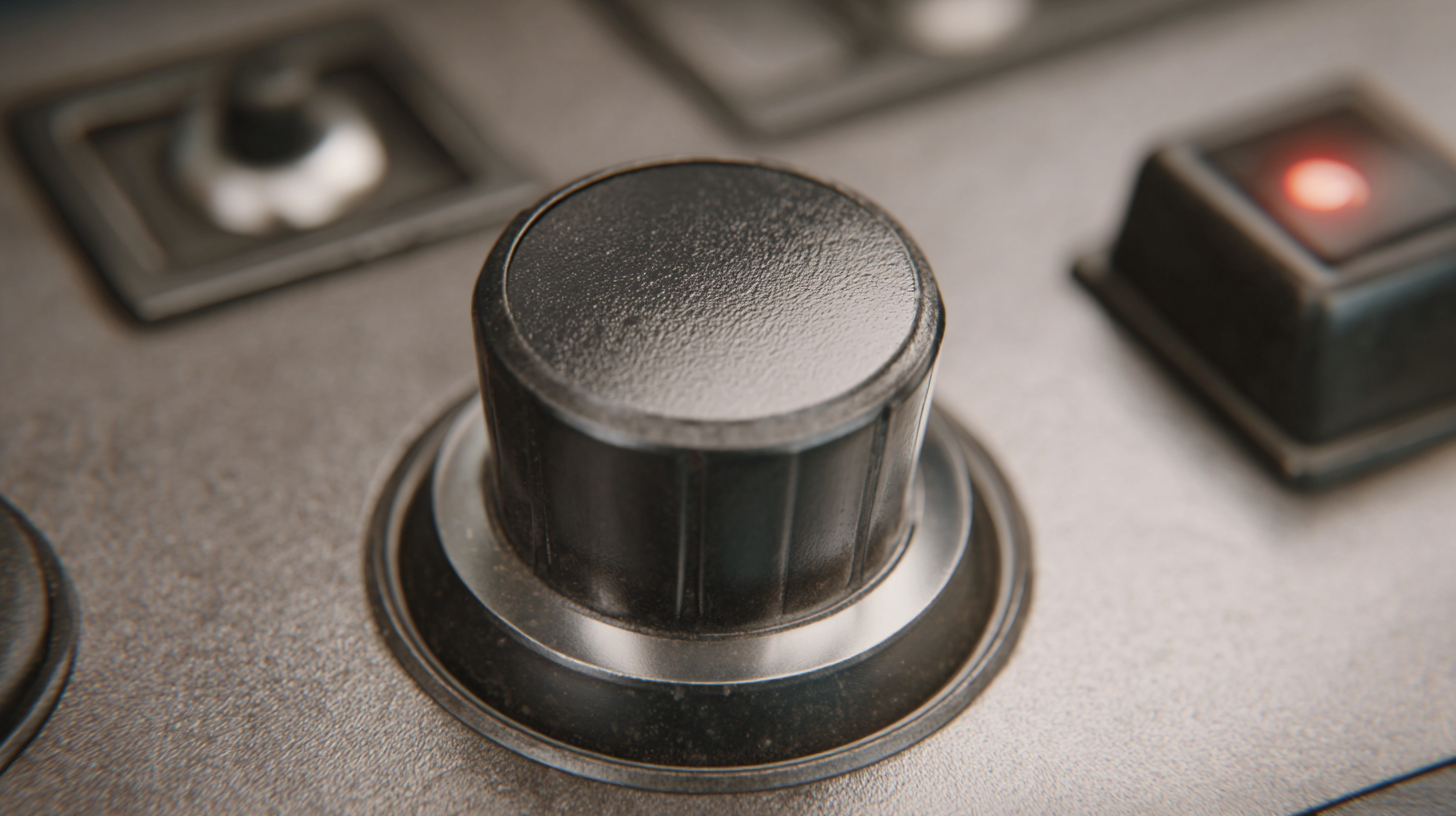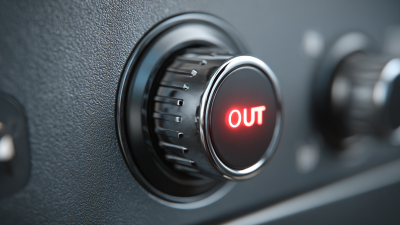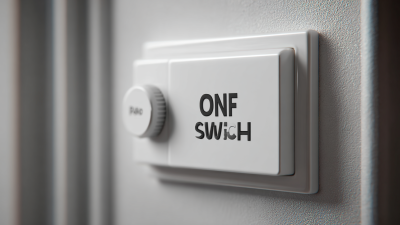Understanding the Functionality of Push Button On Off Mechanisms
In the realm of modern electronics and user interface design, the "Push Button On Off" mechanism has become a quintessential feature across various devices, ranging from household appliances to sophisticated industrial equipment. According to recent market analysis by Research and Markets, the global market for push button switches is projected to reach $4.1 billion by 2025, driven by the demand for user-friendly operation and efficient design.

These mechanisms provide not only a simplistic and reliable means for controlling devices but also enhance the overall user experience. As technology advances, a deeper understanding of the functionality and applications of Push Button On Off mechanisms is essential for engineers and designers aiming to create intuitive and responsive systems. In this guide, we will explore the underlying principles, benefits, and considerations that govern the effective implementation of these mechanisms in various applications.
Exploring the Mechanical Principles Behind Push Button On Off Mechanisms
Push button on-off mechanisms are integral components in various devices, providing an intuitive interface for user interaction. The underlying mechanical principles are rooted in the basic operational functions of these switches. When a button is pressed, it completes an electrical circuit that either powers on or off a device. This simple yet effective design relies on the use of springs and contacts that are engineered to withstand thousands of actuation cycles.
According to a report by MarketsandMarkets, the global switch market size is expected to grow from USD 92.4 billion in 2020 to USD 117.2 billion by 2025, highlighting the increasing demand for reliable push button mechanisms in consumer electronics, automotive applications, and industrial control systems.
Further understanding these mechanical principles involves examining the types of push button mechanisms, such as momentary vs. maintained switches. Momentary switches allow current to flow only when the button is pressed, often found in applications like doorbells and alarm systems. In contrast, maintained switches can hold a circuit until intentionally reset, making them suitable for applications like light switches. The engineering of these mechanisms encompasses considerations of durability and ergonomics, ensuring that they can handle the demands of modern technology.
With an estimated failure rate of less than 0.01% in high-quality push button systems, as noted by the IEEE GlobalSpec, it’s clear that these mechanisms not only enhance user experience but also contribute significantly to the reliability of various devices in our daily lives.
The Role of Push Buttons in Modern Automation Systems and Industries
In the realm of modern automation systems and industries, push buttons serve as pivotal tools that bridge human interaction with machines. According to a report by MarketsandMarkets, the global market for industrial automation is projected to reach $296 billion by 2026, highlighting the growing reliance on intuitive control mechanisms. Push buttons, with their simplicity and reliability, are integral to the operation of various automated systems, from assembly lines to robotics, offering users clear and immediate control over complex processes.
Moreover, the role of push button on/off mechanisms extends beyond mere functionality; they enhance safety and efficiency in industrial environments. The International Federation of Robotics reports that industrial robot installations have surged, with over 400,000 units sold in just a year. In such high-performance settings, push buttons act as essential stopping or starting points, ensuring that operators can respond swiftly in critical situations. This capability is not just about operational efficiency but also about fostering a safer workspace, proving that even simple devices like push buttons play a significant role in the advancement of modern automation technologies.

Common Applications of Push Button Mechanisms: From Household to Industrial Equipment
Push button mechanisms play a vital role in both household and industrial equipment, making them essential for everyday operations. In households, these buttons are commonly found in devices such as microwaves, coffee makers, and washing machines, providing users with a simple and intuitive way to control their appliances. The tactile feedback offered by these buttons not only enhances user experience but also ensures ease of troubleshooting when something goes wrong.
In industrial settings, push button mechanisms take on a more robust role. They are often integrated into machinery and equipment used in manufacturing and assembly lines, where speed and precision are crucial. These buttons can be customized for different functions, such as emergency stops, machine starts, or mode changes. The reliability and durability of push buttons in harsh environments make them indispensable in maintaining safety and efficiency in operations. They serve as the backbone for many automated systems, contributing significantly to productivity across various sectors.
Analyzing the Safety Standards and Regulations for Push Button Mechanisms
 Push button on-off mechanisms are integral components in many devices, demanding adherence to strict safety standards and regulations. These mechanisms, commonly found in industrial and consumer products, must comply with guidelines set forth by organizations such as the International Electrotechnical Commission (IEC) and the American National Standards Institute (ANSI). These regulations ensure that push buttons are designed to minimize risks associated with accidental activation, thereby enhancing user safety.
Push button on-off mechanisms are integral components in many devices, demanding adherence to strict safety standards and regulations. These mechanisms, commonly found in industrial and consumer products, must comply with guidelines set forth by organizations such as the International Electrotechnical Commission (IEC) and the American National Standards Institute (ANSI). These regulations ensure that push buttons are designed to minimize risks associated with accidental activation, thereby enhancing user safety.
Furthermore, understanding the safety standards for push button mechanisms involves examining both the physical design and user interface considerations. For instance, push buttons must have clear labeling to prevent confusion during operation. Additionally, the materials used should be durable enough to withstand wear and occasional misuse without failure. Compliance with safety standards not only protects end-users but also reduces liability for manufacturers, making it crucial for industry stakeholders to stay informed about the latest regulations in push button technology.
Future Trends in Push Button Design: Innovations and Smart Technologies
The push button mechanism has evolved significantly, integrating smarter technologies that enhance user interaction and functionality. According to a recent market report by Research and Markets, the global smart switch market is projected to reach USD 30 billion by 2025, driven largely by the growing adoption of Internet of Things (IoT) devices. This shift towards smarter push buttons signifies a trend where traditional functionalities are being complemented by advanced features, such as remote control and automation, appealing to tech-savvy consumers.
As we look to the future, the design of push button devices is witnessing innovative transformations. Touch-sensitive surfaces, customizable interfaces, and eco-friendly materials are becoming standard in modern designs. Notably, the integration of voice-activated controls is rising, allowing for hands-free operation. A Statista report highlights that nearly 40% of households in developed regions are expected to adopt smart home technologies by 2024, paving the way for push buttons that cater to convenience and accessibility.
Tip: When choosing push button mechanisms for your projects, consider those with modular designs that allow for easy upgrades, ensuring compatibility with future advancements in technology. Additionally, prioritize designs that feature energy-efficient options to minimize environmental impact while enhancing functionality.
Related Posts
-

15 Best Push Button On Off Solutions for Global Buyers
-

Ultimate Checklist for Sourcing the Best Push Button On Off Switches Worldwide
-

Exploring Maintenance Costs and Customer Support Advantages in Best Push Button On Off Technologies
-

Unmatched Excellence in Manufacturing Best Push On Off Switch from a World Class Chinese Factory
-

Discovering Top Quality Suppliers for Best Push On Off Switches Your Comprehensive Guide
-

2025 Market Insights: The Rise of Best Push Button Starter Switch in Global Manufacturing

